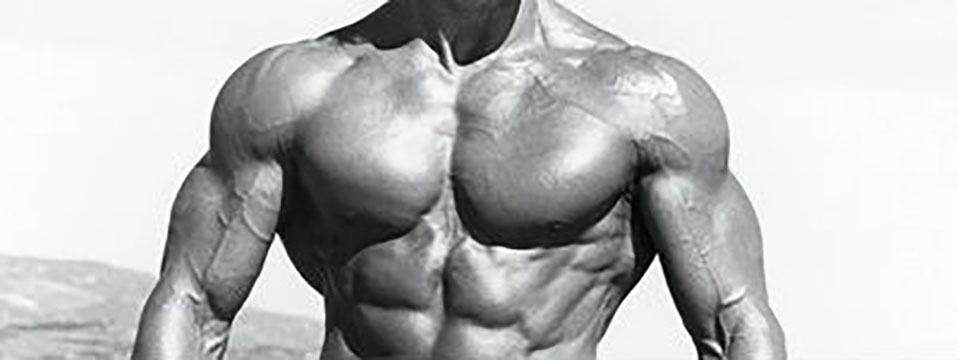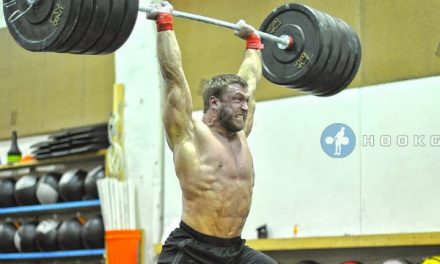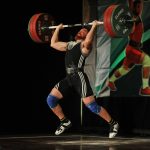by: Lino Cappelli, CSCS
A bigger chest, a broader back, thicker arms; it’s what every young man wants to achieve. So they spend countless hours in the gym, doing set after set, day after day. At first, the results are great! But guess what? Even the greatest programs can’t give gains after gains, the results slow down or even stop after a while (usually 6-8 weeks) and the typical response is either add more weight, or do more sets.
The most common mistakes made in the gym when trying to get big:
Too much time under tension or too much rest.
It is a very common to see people in the gym use work sets that are way too long, or use sets that are so draining they have to take three, four, or even five minutes to recover. By doing many reps, it might SEEM like a more effective workout, but the adaptations your body will go through do not maximize hypertrophy, same for resting too long.

Get Hypertrophy right:
Using the work/rest ratio scales that all legitimate fitness research groups agree upon (NSCA, ACSM, NASM, NCSF, etc) hypertrophy is emphasized when time under tension is between 25 and 40 seconds, and rest ratio should be less than 1. (Jared W. Coburn, 2011)
This means that your resistance is determined by your ability to make set last between 25-40 seconds and need no more than 55-75 seconds of rest. Keep in mind that one rep of the big three usually takes about 2-3 seconds, so within 25-40 seconds you will be able to get 10-15 reps.
You can maximize hypertrophy by putting a little thought into your workouts. Here are four workout strategies (and why they work) that you can combine and apply to always get the gains:
1. The VOLF method:
Benefit:
Simple and Fast
Drawback:
Very demanding
Doing two work sets until volitional failure is one of the simplest ways to focus on hypertrophy. The concept is that you maximize the number of motor units recruited, and thus muscle fibers stimulated to grow, when the muscle reaches momentary muscle fatigue, or volitional failure.
2 sets x 14 reps (70%1RM) w/ 60s rest.
According to the books, 70% of 1RM is the 10-12RM, so the goal is to go through forced reps. if you have some lifting experience, you should definitely be able to hit 10 good reps, two slow ones and grind the last two out (good form and a spotter always required.) Rest for one minute, and jump in again and try to get another 14. More than likely you will fail to make it past eight or nine reps without gassing. Congrats you have stimulated ALL of the motor units in those muscles and are on your way to getting bigger. Increase resistance when both sets are completed to 14 reps. (O’Hagan FT1, 1995)
Personally I love prescribing the volitional failure method on things like chins ups and dips because they are usually exercises that most gym goers struggle getting more than 10 reps on back to back sets with low rest; also, when after doing them weighted, the ability to do bodyweight chin ups an dips skyrockets.
2. The 4-0-1 pace:
Benefit:
High return
Drawback:
Very time consuming
Pace is one of the most underused concepts in the world of bodybuilding, probably because it takes a very long time to go through negative sets. Looking back at the texts written (ghostwritten?) by Arnold himself he discusses the benefits of doing slow negatives to maximize volume. (Arnold Schwarzenegger, 1999) Research shows that using a pace that emphasizes the eccentric portion of a movement (negative) leads to greater increases in muscle cross sectional area (size strength) that those who use an equal concentric/eccentric pace. (Burd, 2010)
5 sets x 5 reps, 4-0-1 tempo (70%1RM) w/ 60s rest.
Although it looks like a low volume workout, it is exactly within the time under tension and work/rest ratio recommendations to emphasize hypertrophy. When doing negatives, the mindset should be to keep the muscles
very tight and push against the weight, but let the weight “win.” The most common complaint with negatives is that they are very draining, but that is not the case here, 5 reps at 70%1RM should be around 50% effort. This training method is loaded to form, which means that you can increase resistance over time and within a workout as long as the rest times, tempo and lifting technique stay the same.

3. Using variable load based equipment:
Benefit:
Low risk of injury
Great response
Set back:
Requires commercial gym
equipment/membership
This is NOT a call to abandon squatting or pressing, as every successful lifter will tell you, there is no escaping them. Squatting and pressing give you the best “bang for the buck” for risk/reward in strength training and should be the foundation of every weight training program. However machine based equipment creates an isolated and variable resistance that allows the body to do the most work because it eliminates the need to stabilize the load, and exhibits the most resistance when the muscle is strongest.
Cam based equipment use a pulley that has its axis of rotation off-center because it is longer in one direction, and is set up so that when the muscle is strongest (peak length tension relationship) the resistance has the greatest leverage. Using this type of equipment has been shown to increase cross sectional area more than comparable free weight techniques. (A., 2010)
Putting it all together:
There you have it, four strategies you can use to work on hypertrophy, either in combination, or on their own. The best part is that these strategies can be applied to virtually any form of training! For example: let’s say you have absolutely no equipment yet you need to work on hypertrophy for the pushing muscles of the upper body: combine the volitional failure method and the 4-0-1 method for push-ups and you will get a killer chest workout!
Try it out and feel free to comment with your opinion.
Yours in strength,
L.
Stay connected!
Here’s how to follow us:
Instagram: @GentlemanAndMeathead
Lino: @TrainWithLino
Facebook: Facebook.com/GentlemanAndMeathead
Twitter: @ClassyMeathead
Sources
A., B. (2010). Biomechanics of off-center monoarticular exercises with lever selectorized equipment. J Appl Biomech, 73-86.
Arnold Schwarzenegger, B. D. (1999). The New Encyclopedia of Modern Bodybuilding : The Bible of Bodybuilding, Fully Updated and Revised. San Diego : Simon & Schuster.
Burd, N. e. (2010). Low-load high volume resistance exercise stimulates muscle protein. PLoS One, e12033.
Jared W. Coburn, M. H. (2011). NSCA’S Essentials of Personal Training – 2nd Edition. Colorado Springs: Human Kinetics.
O’Hagan FT1, S. D. (1995). Comparative effectiveness of accommodating and weight resistance training modes. Med Sci Sports Exerc, 1210-9.







